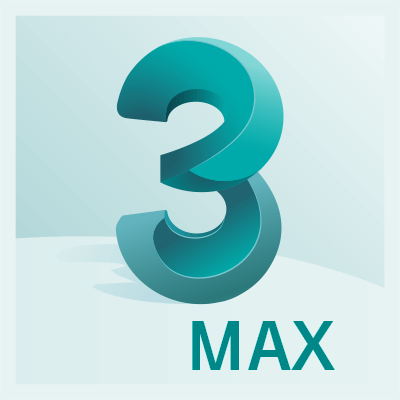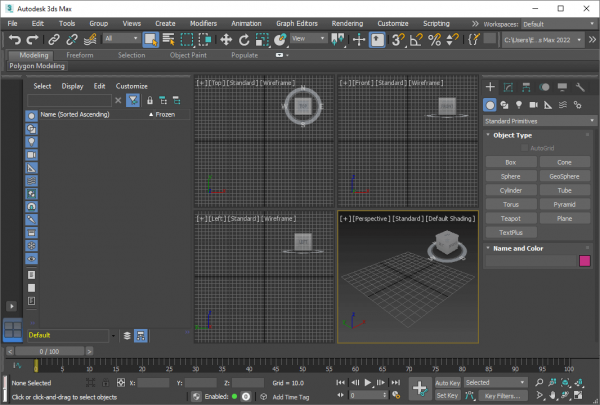Overview of Autodesk 3DS MAX 2026.2:

Professional 3D modeling, rendering, and animation software, Autodesk 3DS MAX 2026.2 Cracked, lets you create expansive worlds and high-end designs. Bring environments and landscapes to life with powerful modeling tools. Create highly detailed designs and props with intuitive texturing and shading tools. Iterate and produce professional-looking renders with full artistic control.
Autodesk 3DS MAX 2026.2 Patch has an integrated Arnold renderer that provides a rich experience and can handle your most complex characters, scenes, and effects. You can save time with centralized rendering tools for interactive light mixing, color correction, and lens effects in the rendered image. Plus, you can work faster with an easy-to-use user experience and intuitive controls, rehearsing and producing high-quality renders and variations faster.
Autodesk 3DS MAX 2026.2 License Key lets you extend your workflow through automation so you can spend more time getting creative. Use it as a compute engine to scale content production, extend integrated workflows with accessible APIs, and speed up manual steps to increase productivity.
Autodesk 3DS MAX 2026.2 Key Features:
- Retopology tools: Automatically optimize high-resolution model geometries to create crisp quad mesh geometries.
- Smart Extrude: Project faces onto 3D objects intuitively and flexibly. Automatically rebuild and stitch adjacent faces.
- Open Shading Language (OSL) support: Create or use pre-existing procedural OSL maps with supported renderers.
- Baking to texture: Experience efficient, intuitive, and fully scriptable texture toasting.
- Integrated Arnold renderer: Arnold for Autodesk 3DS MAX Full Version (MAXtoA) supports interactive rendering directly from the interface.
- Interactive viewports: Reduce design iterations with render-quality window previews, displaying hardware PBR (physical rendering), and live camera effects.
- Software Security: Use safe scene loading to protect your work from potentially dangerous scripts that might be part of scene files.
Autodesk 3DS MAX 2026.2 More Features:
3D modeling
- Retopology tools: Automatically reconstructs polygon mesh data as a clean quad topology with uncompromising accuracy. These tools can be used to reduce complex high-resolution assets and enhance the traditional design and generative modeling work in Autodesk 3DS MAX Latest Version.
- Smart Extrude: Interactively extrude faces onto 3D objects using flexible smart extrusion operations such as cut and overlap. Automatically rebuild and sew adjacent faces without having to manually correct hidden faces or geometric data.
- Mesh and surface modeling: Create parametric and organic objects with polygons, subdivision surfaces, and spline-based modeling features.
- Modifier Stack Workflow: Quickly draft, iterate, and explore design ideas using a variety of unique modifiers.
- Spline Workflows: Create and animate geometry in several intuitive ways with the spline tool.
- Texturing and shading: Generate high-quality textures that render accurately in the viewport using new or pre-existing OSL maps with supported render engines.
- Baking to texture: Discover an elegant, intuitive, and fully writable texture baking experience with support for PBR (physical rendering) materials, overrides, and OSL workflows.
- Material Editor: Add finishing touches to materials, modify textures, and use vibrant colors to create photorealistic designs. study again
- Lightning: Illuminate and enhance your scene using photometric and standard lights.
3d rendering
- Integrated Arnold renderer: Use the Arnold GPU renderer to see changes in the scene in real-time, including lighting, materials, and camera.
- Interactive viewports: Reduce design iterations with render-quality window previews, displaying hardware PBR (physical rendering) and live camera effects.
- ActiveShade viewport: With an interactive rendering experience, view your scene in near-finish render quality as you work.
- Physical camera: Simulate real camera settings such as shutter speed, aperture, depth of field, and exposure.
- Scene converter: Seamlessly and consistently switch materials, lights, cameras, and presenters between them.
Animations and effects
- Character animation tools: Create procedural character animations and rigs with CAT (character animation toolkit), biped, and mob tools.
- Motion paths: Preview and adjust animation paths directly in the window.
- 3ds Max fluids: Create realistic fluid behaviors, such as water, oil, and lava, and mimic gravity and collision effects.
- Particle flow effects: Create advanced particle effects like water, fire, spray, and snow.
- Extensive plugin library: Access hundreds of industry-leading third-party plugins from our vast community.
Workflows and pipelines
- Software Security: Use Safe Scene Script Execution to protect your work against malicious scripts that may be part of scene files, and the Malware Removal feature, which detects and removes known malicious scripts from scene files and startup scripts.
- Python 3: Enjoy tighter pipeline integration with support for Python 3.
- Pipe integration support: Easily customize Autodesk 3DS MAX 2026.2 Keygen to suit your production line needs.
- Modern UI and workspaces: Create your custom workspace with a more modern, responsive, and DPI-enabled UI.
- GL Transmission Format (glTF) support: Publish assets from your 3ds Max scenes to glTF 3D content for use in web applications, online stores, browser games, and other online outlets.
What’s new in Autodesk 3DS MAX 2026.2?
(Released on 07-08-2025)
Animation
- Added a new optional property called “tag” to Transform List Controllers. Tags can be found through MAXScript to make changes to Transform List Controller data.
Color Management
- A “Don’t Show Again” check box has been added to the Color Management dialog boxes.
Core
- The state of macro buttons in toolbars were being updated multiple times when performing a scene operation, which could cause them to “flash” unnecessarily. To resolve this, updates are now queued and should now only occur once per scene operation.
MAXScript
- Sped up getFiles and getDirectories when recursing many folders. Added keyword argument exactMatch to getFiles and getDirectories. If false (the default) short file name (8.3) matches may be returned.
Modeling
- Fixed an issue where the Attribute Transfer modifier was not properly updating its result when the user performed an undo action.
- Fixed an issue with the Attribute Transfer modifier when using MaterialID transfer where the modifier was not providing the correct result with Rotate & Scale active.
- When relaunching 3ds Max, the UI was not properly updating to correctly reflect if the user had set the selection method to Window or Crossing in their previously closed session. This would result in 3ds Max always displaying in Crossing mode, even if it wasn’t the mode that it was actually using.54
- Resolved an issue where the Push modifier was flagging a topology change to happen, which could cause the modified object’s geometry to distort and look incorrect if it was moved or enabled/disabled in the Modifier stack.
Screenshots:


System Requirements:
- Operating System: 64-bit Microsoft® Windows® 11 and Windows 10.
- CPU: 64-bit Intel® or AMD® multi-core processor with the SSE4.2 instruction set.
- RAM: 4 GB of RAM minimum (8 GB or more recommended).
- Disk Space: 9 GB of free disk space for installation.
Autodesk 3DS MAX 2026.2 with Keygen Full Version Download from the link given below:

